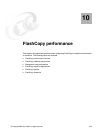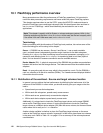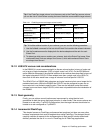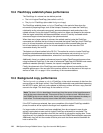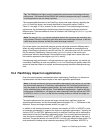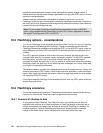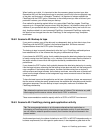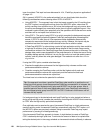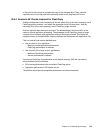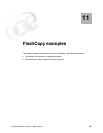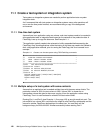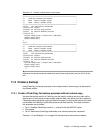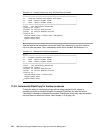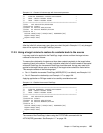Chapter 10. FlashCopy performance 119
of the point-in-time refresh to complete the copy of the changed data. Finally, take the
required point-in-time copy with the incremental refresh at the required point in time.
10.6.4 Scenario #4: Ranks reserved for FlashCopy
Another configuration worth considering is the one where 50% of the ranks (capacity) are all
FlashCopy source volumes—and where the application write I/Os take place—and the
remaining 50% of the ranks (capacity) are all FlashCopy target volumes.
Such an approach does have pros and cons. The disadvantage is the loss of 50% of the
ranks for normal application processing. The advantage is that FlashCopy writes to target
volumes will not compete with applications writing to the target volumes. This allows the
background copy to complete faster, and thus reduces the interference with application I/Os.
This is a trade-off that must be decided upon:
Use all ranks for your application
– Maximize normal application performance.
– FlashCopy performance is reduced.
Use only half of the ranks for your applications
– Maximize FlashCopy performance.
– Normal performance is reduced.
If planning a FlashCopy implementation at the disaster recovery (DR) site, two distinct
environments must be considered:
DR mirroring performance with and without FlashCopy active
Application performance if DR failover occurs
The solution should provide acceptable performance for both environments.



